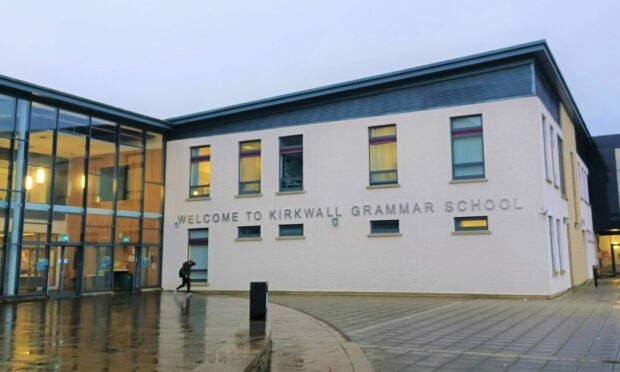The level of pupil absence being seen in Orkney’s schools has risen since the pandemic.
Prior to the outbreak of Covid, in 2018 and 2019, Orkney was above the average for pupil attendance across its primary and secondary schools.
It had a 95.6% attendance rate.
However, this has dropped to 91%. This brings Orkney’s schools in line with the Scottish average, according to council officers.
Councillors received the updated figures during a meeting of the council’s Education, Leisure, and Housing Committee.
While viewing a report on updated guidance for monitoring and tracking attendance in schools, they were told this is thought to be down to increased sickness absence as well as some “pupil and parent anxiety”.
The council’s service manager for support for learning and inclusion Steve Arnold presented the figures.
‘Covid hangover’
He said studies have shown that a pupil missing four weeks over a year is linked to “lower levels of attainment, peer relationships, emotional and behavioural difficulties, poor employment opportunities, and involvement in offending behaviour.”
Mr Arnold said the council’s service is currently monitoring attendance monthly.
Peter Diamond, the council’s Head of Education, said there remains a “covid hangover” within schools.
He said some of the drop in attendance may come from a situation where pupils are aware of how sick they are feeling or looking, and are abiding by advice to stay away from their peer group if they are ill.
Councillor John Ross Scott asked if pupils’ parents or carers knew about pupil absences.
He asked: “Do we know how many parents are aware of their youngsters’ movements during the school day if they are not attending school?”
Mr Arnold said: “The occurrence of children being absent without prior notification from parents has decreased markedly.
“The instances of children being absent from school when the parents haven’t realised they’re absent is extremely rare.”
Mr Scott also asked if there was a problem caused by parents deciding to take their children on holiday.
Service expect there has been a rise in homeschooling
Mr Arnold said there has been “a history” of parents choosing to take holidays during term time.
However, he said there is clear guidance around approving this from Education Scotland, which restricts it.
Exceptions include parents that can’t take holidays during school holidays, such as those in military service, or for cultural experiences.
Mr Arnold said it was “very, very rare” that holidays would be approved for term time. However, it does still happen.
Religious representative on the ELH committee, Rev Fraser Macnaughton, asked about the impact of homeschooling on attendance.
Homeschooling increase
He was told that following the closing of Orkney’s schools during lockdown, some families chose to continue with homeschooling.
Mr Arnold said: “Nationally, there has been a rise in families choosing to home-educate.”
For Orkney, he said he couldn’t comment specifically but would expect there has been an increase.
However, Mr Arnold noted that children being home-educated do not affect attendance figures.

Conversation